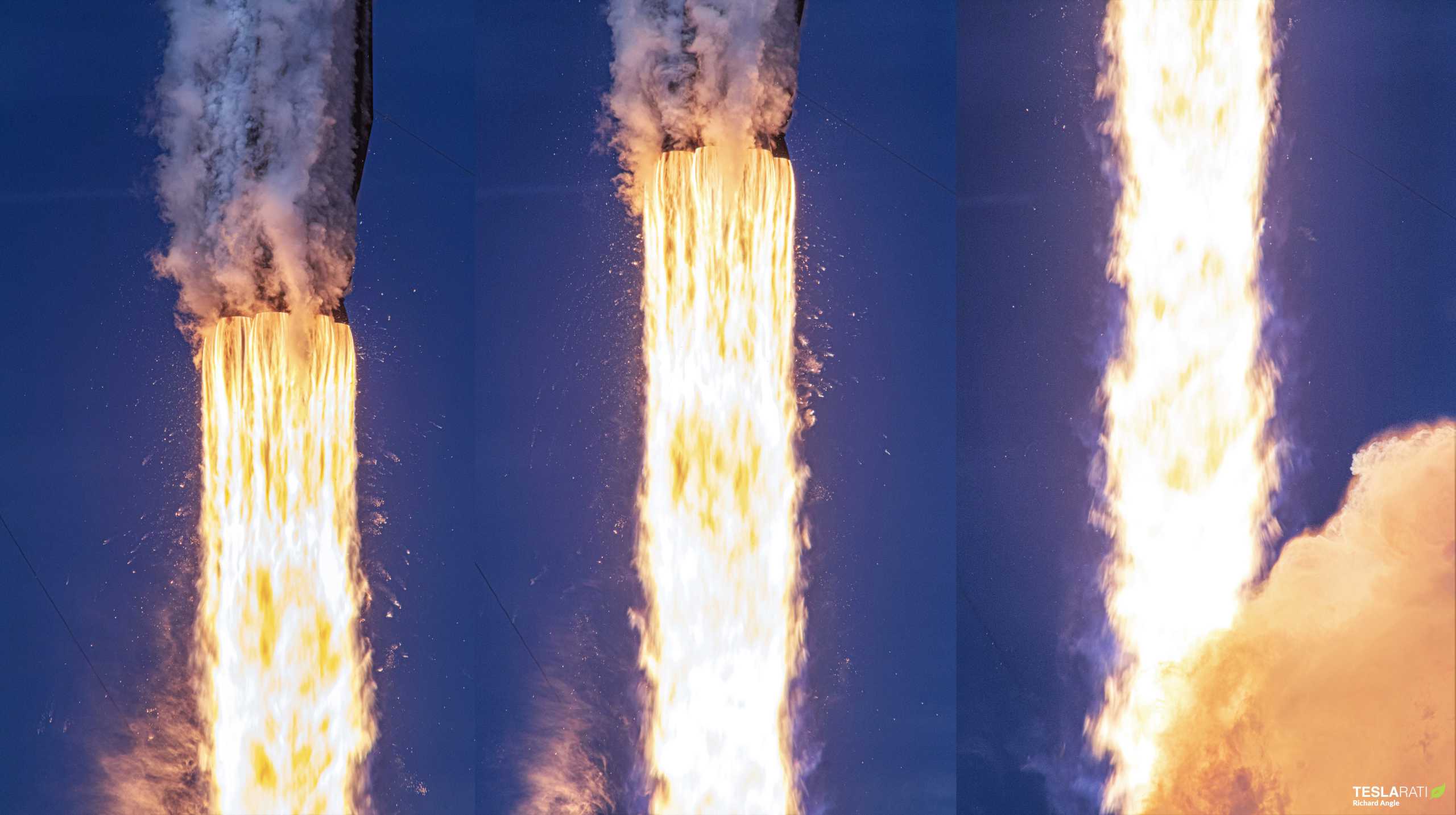

News
SpaceX still eyeing back-to-back East and West Coast launches this weekend
Update #2: SpaceX’s Starlink-15 launch has slipped to Sunday, November 22nd, roughly 36 hours after Sentinel 6A’s scheduled November 21st launch.
Update: Three days later, there’s still a chance that SpaceX will be ready to attempt back-to-back East and West Coast Falcon 9 launches on Saturday, November 21st, potentially launching twice in exactly ten hours if schedules hold.
On the West Coast, a new Falcon 9 rocket has successfully completed a routine static fire test and is likely just hours away from rolling out to SpaceX Vandenberg Air Force Base (VAFB) Space Launch Complex 4E (SLC-4E). The rocket is scheduled to place the international Sentinel 6A oceanographic satellite into a polar orbit, followed by booster B1063’s first landing attempt at Landing Zone 4 (LZ-4).
On the East Coast, Falcon 9 and 60 more Starlink v1.0 satellites went vertical at SpaceX’s Cape Canaveral Air Force Station (CCAFS) Launch Complex 40 (LC-40) pad. It’s unclear if SpaceX will perform a prelaunch static fire test despite the fact that the Starlink-15 mission will be booster B1049’s seventh flight – a first for SpaceX and orbital-class reusable rocketry.
Oddly, SpaceX has yet to update its website with details or confirmation of the two back-to-back launch attempts, raising the possibility of one or both being delayed, but hardware at the pad remains an unequivocal confirmation that at least one of the missions is close to liftoff. As usual, whenever Sentinel 6A and Starlink-15 do launch, SpaceX will host an official webcast on its YouTube channel.
SpaceX appears to be on track to attempt two separate Falcon 9 launches and landings within the same ten-hour, also marking the company’s 14th Starlink mission this year and first West Coast launch in a year and a half.
After overcoming a range of minor issues, replacing two Falcon 9 booster engines, effectively reactivating a dormant orbital launch complex, and doing all of the above to a standard capable of satisfying NASA’s strict expectations, SpaceX is officially set to launch the Sentinel 6A oceanography satellite no earlier than (NET) 9:17 am PST (16:17 UTC) Saturday, November 21st. The twist: Falcon 9 will be launching from Vandenberg Air Force Base (VAFB), California for the first time since June 2019.
Meanwhile, back on the East Coast, SpaceX has successfully completed Crew Dragon’s operational astronaut launch debut, clearing the company to focus on its third November mission – Starlink V1 L15. Set to be SpaceX’s 14th dedicated Starlink launch in 2020 alone, Starlink-15 is currently scheduled to lift off NET 10:17 pm EDT (03:17 UTC) on November 21st – coincidentally exactly ten hours of Falcon 9’s Sentinel 6A launch.
SpaceX’s Sentinel 6A launch will debut new Falcon 9 booster B1063, first spotted on its way from the company’s McGregor, Texas test facilities to VAFB in late August. Unfortunately, when Falcon 9 booster B1062 suffered a last-second abort on October 2nd, the Merlin 1D booster engine issue ultimately deemed responsible for the anomaly was also traced back to B1061 and B1063.
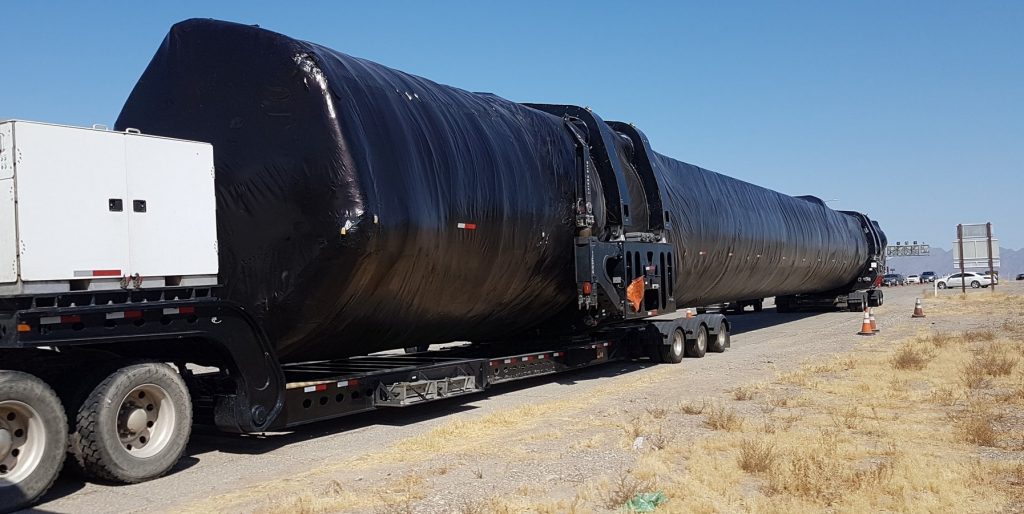
As a result, SpaceX chose to replace an average of two Merlin 1D engines on each of the three boosters in a process that took several weeks. Additional difficulty was added due to the fact that all three new boosters were assigned to high-profile missions for exceptionally strict NASA and US military customers, necessitating extra caution and verification. Regardless of the hurdles, SpaceX managed to complete an entire complex rocket engine anomaly investigation in less than six weeks, determining the root cause, replicating the failure mode with individual engine static fires, replacing multiple engines on multiple boosters, and recertifying all three boosters for their respective flights.
Falcon 9 B1062 successfully launched the US military’s GPS III SV04 satellite on November 5th, followed by Falcon 9 B1061’s flawless four-astronaut launch on November 15th. Of the three impacted boosters, only B1063 remains and is scheduled to launch just four days from now. Barring surprises, all three will likely support one or several dozen more launches in the coming years.
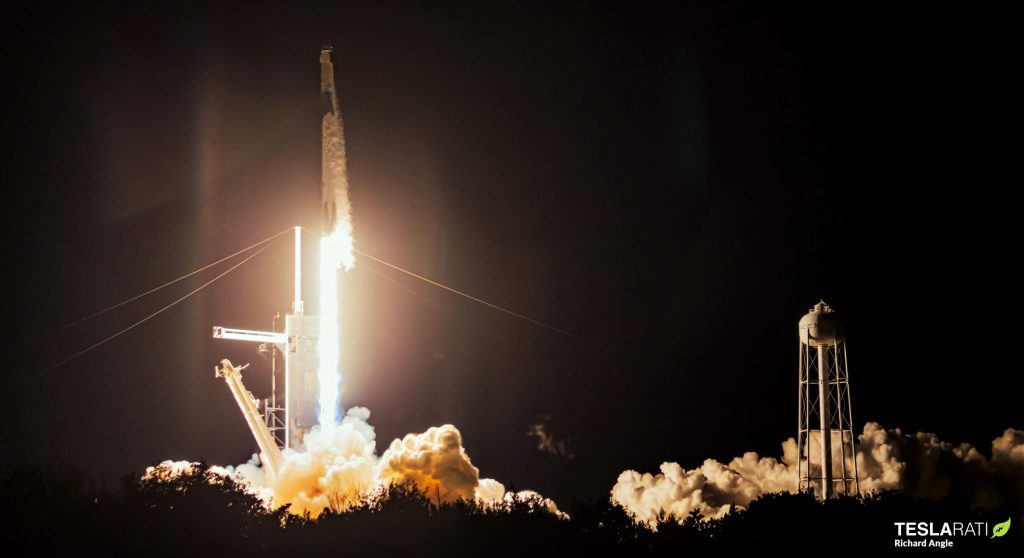
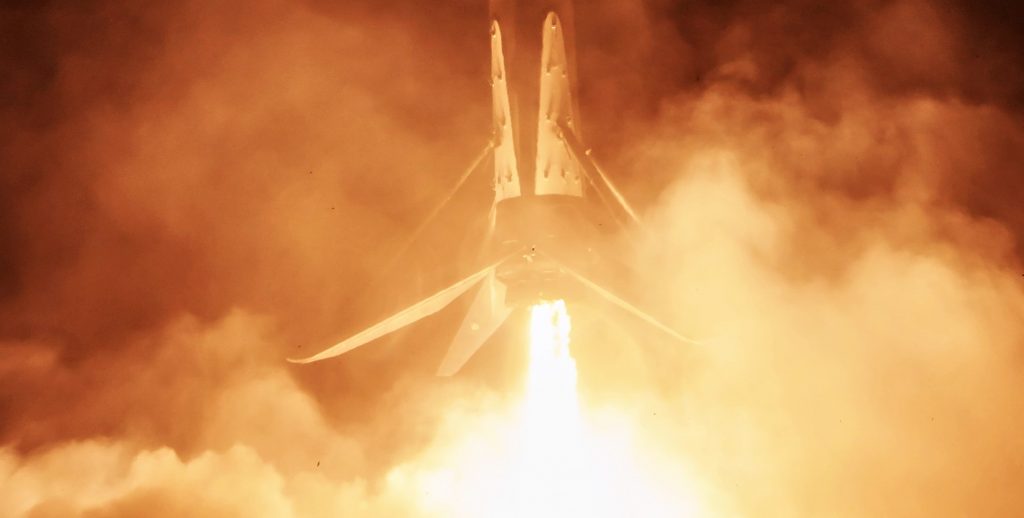
Meanwhile, SpaceX’s November 21st Starlink-15 launch is expected to feature Falcon 9 B1049 in what will become the first time the same rocket booster flies for the seventh time. In essence, if successful, Starlink-15 will effectively mean that SpaceX is 70% of the way towards achieving its longstanding goal of ten launches per booster.
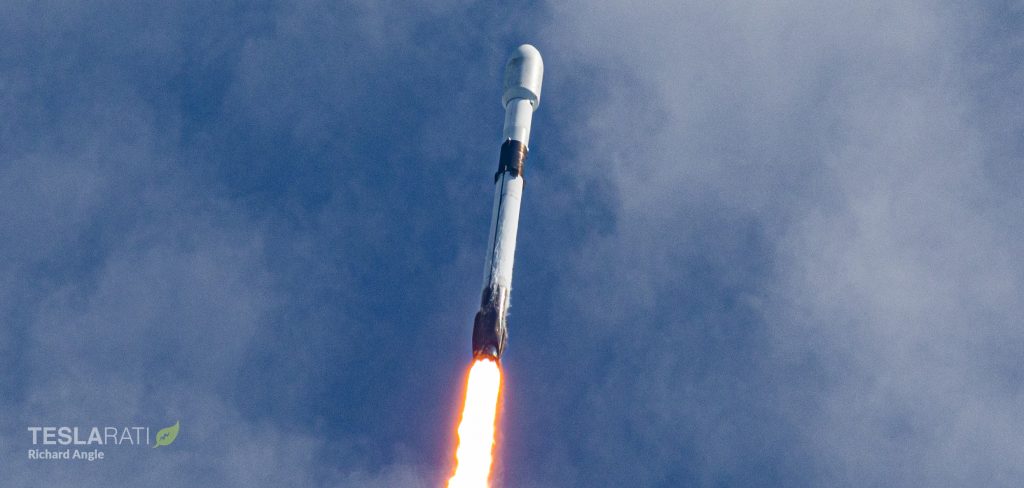
News
SpaceX’s Crew-11 mission targets July 31 launch amid tight ISS schedule
The flight will lift off from Launch Complex 39A at Kennedy Space Center in Florida.

NASA and SpaceX are targeting July 31 for the launch of Crew-11, the next crewed mission to the International Space Station (ISS). The flight will lift off from Launch Complex 39A at Kennedy Space Center in Florida, using the Crew Dragon Endeavour and a Falcon 9 booster.
Crew Dragon Endeavour returns
Crew-11 will be the sixth flight for Endeavour, making it SpaceX’s most experienced crew vehicle to date. According to SpaceX’s director of Dragon mission management, Sarah Walker, Endeavour has already carried 18 astronauts representing eight countries since its first mission with NASA’s Bob Behnken and Doug Hurley in 2020, as noted in an MSN report.
“This Dragon spacecraft has successfully flown 18 crew members representing eight countries to space already, starting with (NASA astronauts) Bob (Behnken) and Doug (Hurley) in 2020, when it returned human spaceflight capabilities to the United States for the first time since the shuttle retired in July of 2011,” Walker said.
For this mission, Endeavour will debut SpaceX’s upgraded drogue 3.1 parachutes, designed to further enhance reentry safety. The parachutes are part of SpaceX’s ongoing improvements to its human-rated spacecraft, and Crew-11 will serve as their first operational test.
The Falcon 9 booster supporting this launch is core B1094, which has launched in two previous Starlink missions, as well as the private Ax-4 mission on June 25, as noted in a Space.com report.
The four-members of Crew-11 are NASA astronauts Zena Cardman and Mike Fincke, as well as Japan’s Kimiya Yui and Russia’s Oleg Platonov.
Tight launch timing
Crew-11 is slated to arrive at the ISS just as NASA coordinates a sequence of missions, including the departure of Crew-10 and the arrival of SpaceX’s CRS-33 mission. NASA’s Bill Spetch emphasized the need for careful planning amid limited launch resources, noting the importance of maintaining station altitude and resupply cadence.
“Providing multiple methods for us to maintain the station altitude is critically important as we continue to operate and get the most use out of our limited launch resources that we do have. We’re really looking forward to demonstrating that capability with (CRS-33) showing up after we get through the Crew-11 and Crew-10 handover,” Spetch stated.
Lifestyle
EV fans urge Tesla to acquire Unplugged Performance for edge in fleet and security industry
Unplugged Performance has built a name for itself by producing performance upgrades for Tesla vehicles.

A growing number of Tesla enthusiasts and longtime community voices are calling on the electric vehicle maker to acquire Unplugged Performance, a California-based aftermarket company best known for tuning Tesla vehicles and developing specialized government fleet solutions under its UP.FIT division.
The idea was once considered a niche proposal among EV fans, but it is now gaining serious attention not just as a performance play but as a strategic move to deepen Tesla’s roots in the fleet and security industry.
A strategic fit
Unplugged Performance has built a name for itself by producing performance upgrades for Tesla vehicles, from track-optimized components to visual and aerodynamic upgrades. But in recent years, its UP.FIT division has pivoted toward a more functional future by outfitting Tesla vehicles like Model Ys for police, military, and government use.
That work has sparked growing calls for closer collaboration with Tesla, especially as the EV maker increasingly leans into autonomy, AI, and fleet services as core components of its next chapter.
“I posted this four years ago, but I think it’s more true now than ever,” wrote Whole Mars Catalog, a well-known Tesla investor and FSD Beta tester, on X. “Tesla should buy Unplugged. But not just as a Performance division. What they are doing with UP.FIT unlocks large government and commercial fleet purchases that can improve utilization.”
Tesla fans such as shareholder Sawyer Merritt echoed the sentiment, calling Unplugged a “great fit within Tesla.” adding, “They are literally located directly next to Tesla’s design studio in Hawthorne.”
Enabling the next wave
Supporters of the idea noted that integrating Unplugged into Tesla’s corporate structure could help accelerate the adoption of autonomous technologies in government sectors. With UP.FIT patrol cars already in use across some U.S. police departments, Tesla fans envisioned a future where self-driving Teslas could potentially revolutionize law enforcement, search-and-rescue, and public service logistics.
“Just imagine how autonomous patrol cars could transform policing and bring us into a safer future,” the veteran FSD tester wrote.
The benefits could also extend to Tesla’s existing consumer base. “They also have some incredible products in the works that I think will appeal to many ordinary Tesla drivers — not just those looking for performance or mods. Stuff that’s so good it should have come straight from the design studio next door,” Whole Mars Catalog noted.
Unplugged Performance, founded in 2013, shares not just a product vision with Tesla, but also geography. Its Hawthorne headquarters sits directly adjacent to Tesla’s design studio, and the two companies have maintained a close working relationship over the years. The aftermarket firm has long positioned itself as a “mission-aligned” partner to Tesla.
In response to the recent calls for acquisition, Unplugged Performance acknowledged the support from the community. “Our very existence is to support the Tesla mission with @UpfitTesla and @UnpluggedTesla,” Unplugged CEO Ben Schaffer posted on X. “We love working with Tesla and are grateful for the community’s support since 2013!”
News
Tesla debuts hands-free Grok AI with update 2025.26: What you need to know
All new Tesla vehicles delivered on or after July 12, 2025, will include Grok AI out of the box

Tesla has begun rolling out Grok, an in-car conversational AI assistant developed by xAI, to eligible vehicles starting July 12. The feature marks the most direct integration yet between Elon Musk’s artificial intelligence startup and Tesla’s consumer product lineup, offering drivers hands-free access to a chat-style companion while on the road.
Grok comes pre-installed on new vehicles
According to Tesla’s FAQ page for the feature, all new vehicles delivered on or after July 12, 2025, will include Grok AI out of the box. Owners of older vehicles may gain access through an over-the-air update, provided their vehicle meets a few hardware and software requirements.
Specifically, Grok is currently only supported on Tesla models equipped with an AMD infotainment processor and running vehicle software version 2025.26 and higher. Compatible models include the Model S, Model 3, Model X, Model Y, and Cybertruck. A Premium Connectivity subscription or active Wi-Fi connection is also required.
Tesla notes that additional vehicle compatibility may arrive in future software updates.
Grok’s features and limitations for now
Drivers can engage with Grok using the App Launcher or by pressing and holding the voice command button on the steering wheel. Grok is designed to answer questions and hold conversations using natural language, offering responses tailored to its chosen personality—ranging from “Storyteller” to the more eccentric “Unhinged.”
For fun, Tesla posted a demonstration of Grok likely running on “Unhinged” talking about what it would do to Optimus when they are on a date, much to the shock of the humanoid robot’s official social media account.
It should be noted, however, that Grok cannot currently issue commands to the vehicle itself, at least for now. Traditional voice commands for tasks like climate control, navigation, or media remain separate from Grok as of writing.
The feature is being released in Beta and does not require a Grok account or xAI subscription to activate, although that policy may change over time.
Grok privacy and in-car experience
Tesla emphasizes that interactions with Grok are securely processed by xAI and not linked to a user’s Tesla account or vehicle. Conversations remain anonymous unless a user signs into Grok separately to sync their history across devices.
Tesla has also begun promoting Grok directly on its official vehicle webpages, showcasing the feature as part of its in-car experience, further highlighting the company’s increasing focus on AI and infotainment features on its all-electric vehicles.
-

 Elon Musk2 weeks ago
Elon Musk2 weeks agoTesla investors will be shocked by Jim Cramer’s latest assessment
-

 Elon Musk3 days ago
Elon Musk3 days agoxAI launches Grok 4 with new $300/month SuperGrok Heavy subscription
-

 Elon Musk5 days ago
Elon Musk5 days agoElon Musk confirms Grok 4 launch on July 9 with livestream event
-

 News1 week ago
News1 week agoTesla Model 3 ranks as the safest new car in Europe for 2025, per Euro NCAP tests
-

 Elon Musk1 week ago
Elon Musk1 week agoxAI’s Memphis data center receives air permit despite community criticism
-

 News2 weeks ago
News2 weeks agoXiaomi CEO congratulates Tesla on first FSD delivery: “We have to continue learning!”
-

 News2 weeks ago
News2 weeks agoTesla sees explosive sales growth in UK, Spain, and Netherlands in June
-

 Elon Musk2 weeks ago
Elon Musk2 weeks agoTesla scrambles after Musk sidekick exit, CEO takes over sales
















